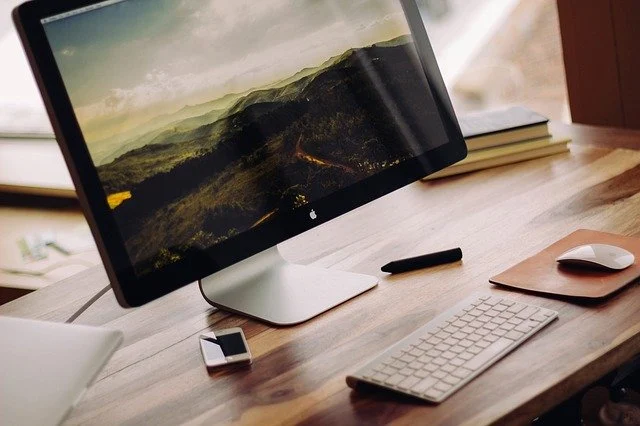Ad Code
Translate
Smart strategies for trading on crypto exchanges
October 20, 2025
Five Do’s For a Healthy Turnover That Bolsters Talent-Retention
October 20, 2025
Discover Honeybee Pharmacy (2025 Guide Important Consumer Tips)
October 14, 2025
What is Ozempic (semaglutide)? (Updated in 2025)
January 30, 2025
Posture Bra: Improving Back Support and Comfort
October 20, 2025
How To Find Suitable Properties In Cyprus?
October 20, 2025
10 Effective Strategies to Improve Domain Authority of Your Website
October 20, 2025
How to Take a Screenshot on a Mac
Khabza Mkhize
February 10, 2020
Since childhood, I worked on a Windows PC and when I joined my new company, they gave me a MacBook Air to work on. Trust me, getting hands-on with a Mac was a little exciting but difficult to handle a few tasks. I started taking notes and here is one of the best strategies on how to crop a screenshot on Mac.
There are several ways to take a screenshot on MacBook Pro however here in this article, I’m listing the most basic and inbuilt steps along with the third-party tools to capture full-screen or a rectangular region with multiple options. There are tasks that demand taking a lot of screenshots. If you want to change your MacBook, look for the selling my MacBook pro option.
Here in this article, you will also learn how to find duplicate files on Mac or edit screenshots. You can take a screenshot of the entire screen, a window/popup, or just a selected portion of the screen. At times, when there is a lot of clutter on our system, we have also used the Best Duplicate File Finder for Mac to remove duplicate files from Mac. Let’s take you through the step-by-step process and the Mac screenshot shortcuts.
How to Take a screenshot on a Mac
To take a screenshot on MacBook Pro just like we do print screen on Windows, we can also print screen on Mac.
- Step 1. Open the page or screen that you wish to capture.
- Step 2. Press the key combination of (Shift + Command + 3) until the screen flicker for a second and you see a small thumbnail at the right bottom corner of the screen.
Capture a Portion of The Screen
Generally, if we take a full screenshot, we may need to edit it to select the required portion. If you just need to capture a portion of the screen, you can do that as well without using any third-party tool.
- Step 1. Keep the portion open or the page on the screen that you wish to capture.
- Step 2. Press the key combination of (Shift + Command + 4) until you see the cursor turning into a crosshair.
- Step 3. Drag the crosshair to select the desired portion of the screen to capture. If you have made a mistake, you can press the space bar and drag it to move the selection. If it is entirely messed up, you can simply press the Esc (Escape) key to cancel the process and start all over again.
- Step 4. To ensure the capture of the selected portion, release the mouse button. You will again see a thumbnail at the right bottom corner of the screen.
Capture a Window, Screen or Menu
If you wish to take a screenshot of a particular window, page, menu or screen, you may follow these steps to cover the edge-to-edge screenshot.
- Step 1. Bring the particular window, page, menu or screen on the top of all other open windows. It should be selected as we keep the window highlighted in the Windows operating system.
- Step 2. Press the key combination of (Shift + Command + 4 + Space Bar) until you see the cursor changing into a camera icon.
- Step 3. Click on the particular window, page, menu or screen to take a screenshot on MacBook Pro or other Mac systems. To cancel taking a screenshot, you may simply press the Esc (Escape) key. If you wish to exclude the shadow from the screenshot of the window, you can press and hold the Option key while clicking on the window.
Where Are Your Screenshots Saved
By default, the screenshots are saved on your desktop in ‘Screen Shot [date] at [time].png’ format. You can also change the location in macOS Mojave or later. For that, you need to open the options menu of the Screenshot app by pressing the (Shift + Command + 5) key combination. Alternatively, you can also drag and drop the thumbnail to any preferred file, folder or document.
If you have taken a lot of screenshots and cluttered a lot of junk files or duplicates, you may take the help of one of the Best Duplicate File Finder for Mac to find duplicate files on Mac and once you have selected the unwanted junk, you may remove duplicate files from Mac.
Featured Post
DL Mining Launches Ethereum Contract Participation Service, Helping Users Earn $2K Stable Daily Returns
Zizo Gala-Mkhize-
October 20, 2025
Soapie Teasers
Sister Sites
Most Popular
List of 6,000+ Dofollow Commentluv Blogs FREE (Updated 2025)
January 16, 2025
Five Do’s For a Healthy Turnover That Bolsters Talent-Retention
October 20, 2025
How To Choose The Right Place For A Winter Campsite
March 06, 2023
Popular posts
List of 6,000+ Dofollow Commentluv Blogs FREE (Updated 2025)
January 16, 2025
Five Do’s For a Healthy Turnover That Bolsters Talent-Retention
October 20, 2025
How To Choose The Right Place For A Winter Campsite
March 06, 2023
Footer Menu Widget
Created By Blogspot Theme | Distributed By Gooyaabi Templates





Social Plugin